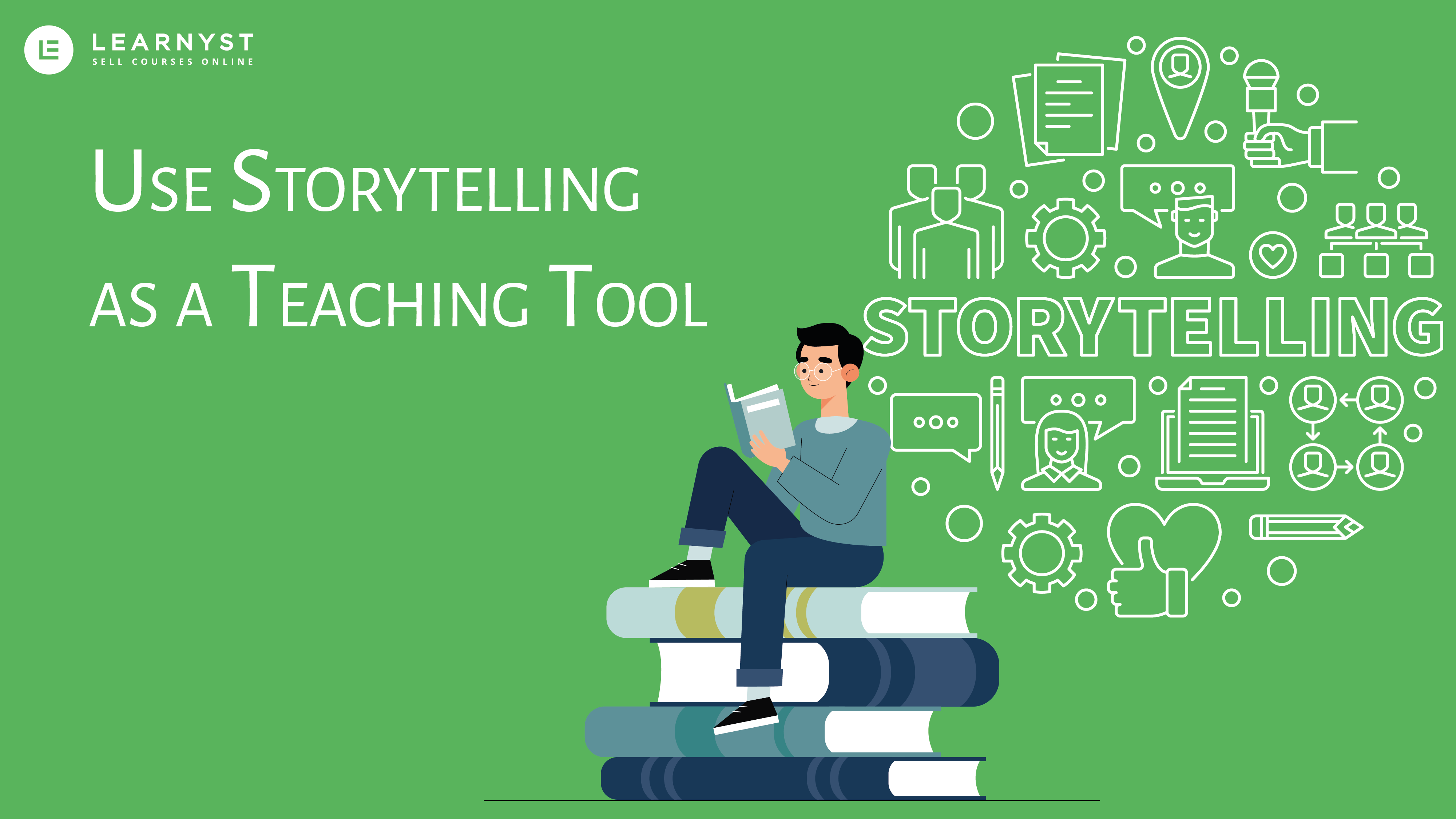Why use storytelling as a teaching tool?
- April 22 2021
- Vaishak
Storytelling as a teaching tool has found great application these days as students’ attention is waning, thanks to distractions like mobile phones and televisions. The importance of storytelling is highlighted by Peter Dinklage’s character on Game of Thrones when he delivered one of the most important lines during the final season.
He quoted, “There’s nothing in the world more powerful than a good story. Nothing can stop it. No enemy can defeat it.”.
Most fans would have overlooked it. But people who have successfully built a brand for themselves or built a successful company surely knew what it meant.
Stories are powerful at influencing people at large. So, it makes sense to incorporate storytelling into teaching. Let us quickly prove this. If you are a student, what would you pick from the below –
- Teacher theoretically explaining why greed is a bad thing
- Tell the same thing using the story of the Goose that Laid the Golden Eggs?

It’s definitely the second option, right?
So without much ado, let’s look at why and how you can perfectly integrate the art of storytelling into your teaching methods.
How storytelling works
Even in this age of technology, stories are central to communication, with a strong narrative being as equally (if not more) compelling as essays and textbooks. They humanize the learning process by giving students the perspective of looking at characters and situations from someone else’s shoes. Contrary to traditional teaching methods, stories have the power to touch our emotions. And when lessons make students “feel”, they are more likely to actively participate in class sessions. Let’s look at some other reasons why you should use storytelling as a teaching tool.
- Stories are what make the message stick to the audience. This is because people remember the feelings of the underlying message more than information. Stories are one of the best ways to tap into the heart of the audience and deliver a deeper message based on emotions.
- Information presentation should be built around a story. Any kind of presentation, be it online or offline, will benefit greatly from storytelling. Organize information into a format with a beginning (to get the context), middle (the challenge), and ending (new reality).
- People love origin stories. Every great superhero has an origin story. We know the motives behind their actions and the situations that gave them their powers. People are naturally curious about where characters (even the fictional ones) come from, how they change and evolve. Include this type of story in your class.
- Stories recontextualize knowledge. Even the most complex theories and concepts can be easily imparted to a student uniquely using a story.
- Stories make people care. Your stories can truly reflect your emotions and experiences when you know your audiences’ pains, frustrations, and joys. People genuinely start to care about topics whose stories allow them to see parts of themselves in the story.
- Stories motivate. Stories have the uncanny ability to motivate an audience towards a goal. They are best used in attitudinal learning because when students are motivated, you no longer have to persuade them into learning. An encouraging story is all it will take to inspire someone to take action.
- There is always time for a good story. You would have noticed that no matter how busy someone is, they almost always stop and listen to someone’s story. This is why people are drawn to novels, movies, and gossips. Storytelling is the way to get and maintain the attention of your target audience.
- People share stories. Stories get people hooked and draw more people as they are passed on from one person to the next. Think about all the Instagram reels that are getting thousands of views.
- Stories give meaning to data: Many people find it difficult to perceive data because they see no meaning in numbers. Storytelling can completely flip the switch and give meaning to these numbers.
Types of stories teachers can use

There are several kinds of stories that you can use to teach your students. Even if a story does not fit the context or subject, you can replace it with another. Below are some of the most popular types of stories used for teaching purposes –
- A story from your own experience
- A story from the life of someone else, like a friend, neighbor, or a family member
- A true story from current events of the world
- A story that took place in history
- A fictional story with made-up characters and events
- An “Imagine if…” story that is completely hypothetical
Ways to use storytelling as a teaching tool
Share your own experiences
This is one of the best methods that you can use because it is based on real-life stories. When you are teaching comparatively difficult concepts, teach them with a story of how you got yourself to understand and remember the concepts when you were a student yourself. For example, gravity may be a concept that some students may find hard to comprehend. But, by telling them a story you heard while studying about it, they may easily understand that.
Use stories to introduce new topics
Try to introduce each new lesson through a story. If you are struggling to create a story of your own making, you can find hundreds of ready-made ones using a simple google search. At least a few of those will fit your topic or concept. Keep in mind not to breach any copyright rules while using stories off the internet.
Foster listening skills
Listening skills are one of the most important life skills that people should possess. There is no better way to improve your students’ attention spans and listening skills than by using stories to get and maintain their attention. But you can’t just use any story that comes to your mind. The stories you choose should be relevant to the subject/concept you are trying to teach.
Have students tell their stories
Why should you limit stories to your own? Allow your students to write, illustrate and tell their own stories. The way to incorporate this may vary depending on the topics at hand, but it is essential to let students tell their own stories because it is essential to them at a personal level and for you to achieve your goals. Your students can use stories in their essays and during live presentations.
What is Learnyst and how can we help
Learnyst is a leader in the Learning Management System space. Not only can you create compelling course content using our tools, but you can also do the marketing necessary to sell your course with relative ease. We also house multiple templates for multiple content formats that let you create content that works with ease. Our platform also emphasizes using storytelling as a teaching tool and offers several features to help you.
Get in touch with us to know how we can help you create and sell courses using stories.


Leave your thought here